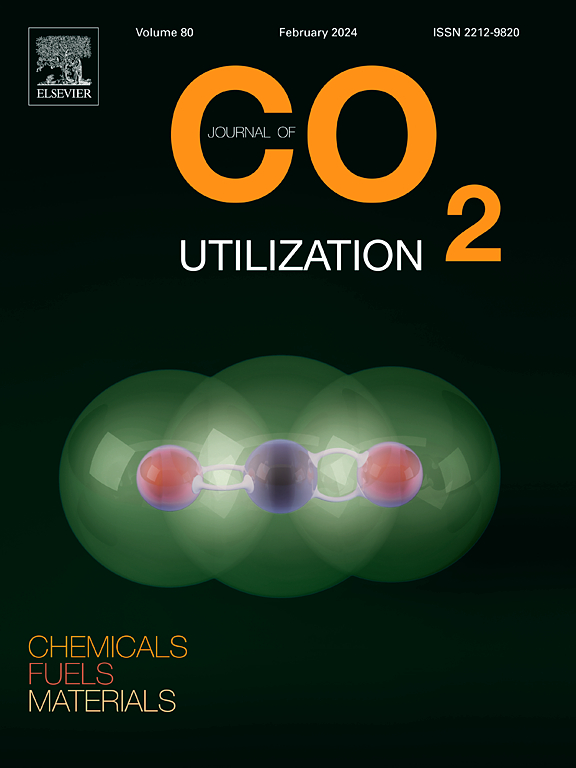Elucidating operational drivers of CO2 transfer and utilization efficiency in photosynthetic algae cultivation systems
IF 7.2
2区 工程技术
Q1 CHEMISTRY, MULTIDISCIPLINARY
引用次数: 0
Abstract
While photosynthetic algae-based systems have shown promise for reducing the carbon footprint associated with biofuel and biochemical production due higher yields than terrestrial crops, there are challenges associated with CO2 delivery and utilization resulting from the chemical and physical environment experienced. Point-source CO2 delivery is a critical component of intensive algal cultivation, but a significant fraction of the CO2 sparged into the aqueous environment is lost. In this context, we review the theoretical considerations for deconvoluting carbon transfer efficiency (CTE) and carbon utilization efficiency (CUE), specifically in microalgal cultivation in response to changes in media formulation and alkalinity. We introduce an empirical and operational approach to increase the efficiency of CO2 transfer and ultimately prime algal cultures for photosynthetic carbon assimilation. We define operational boundaries for improving CUE under a neutral pH regime, with conditions that maintain high algal biomass productivity. Our work supports both the implementation of strategies for increasing CUE as well as provides a framework for monitoring inorganic and organic carbon balances in controlled aqueous systems. The integration of water chemistry in media formulation with dissolved inorganic carbon (DIC) and alkalinity are primary drivers of the inorganic carbon flux from a concentrated CO2 source towards an accessible carbon source for microalgae. We outline a systematic approach by leveraging control over carbon delivery, operational pH in the neutral pH regime, and alkalinity to match available DIC of the media with the demands of the algae to help optimize CTE and CUE. This control increases the feasibility of large-scale biotic CO2 capture in aqueous systems.
求助全文
约1分钟内获得全文
求助全文
来源期刊

Journal of CO2 Utilization
CHEMISTRY, MULTIDISCIPLINARY-ENGINEERING, CHEMICAL
CiteScore
13.90
自引率
10.40%
发文量
406
审稿时长
2.8 months
期刊介绍:
The Journal of CO2 Utilization offers a single, multi-disciplinary, scholarly platform for the exchange of novel research in the field of CO2 re-use for scientists and engineers in chemicals, fuels and materials.
The emphasis is on the dissemination of leading-edge research from basic science to the development of new processes, technologies and applications.
The Journal of CO2 Utilization publishes original peer-reviewed research papers, reviews, and short communications, including experimental and theoretical work, and analytical models and simulations.
 求助内容:
求助内容: 应助结果提醒方式:
应助结果提醒方式:


